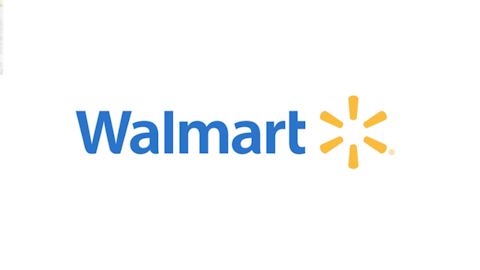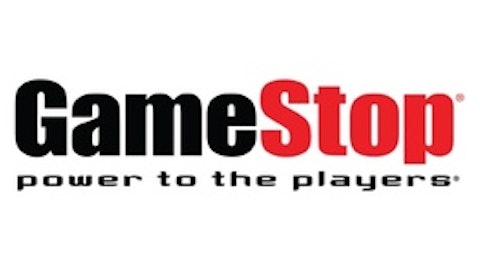Short-sellers may be enjoying a little bit of a victory, with the markets having their worst month in more than a year, but that victory only equated to having the iconic Dow Jones Industrial Average lose 4.4% for August. While optimists would certainly love that figure to be positive, in the grand scheme of things, this drop was pretty small.
Since hitting its decade lows during the Great Recession, the Dow has risen by more than 125% on the heels of a rebounding housing market, a jobs market that is delivering the lowest unemployment rate we’ve seen in five and a half years, and a strengthening financials sector that’s ripe with capital and now well prepared should another deep recession occur.
As you might imagine, not everyone agrees. A few days earlier we examined some of the Dow’s most hated companies — in essence, the companies that short-sellers are targeting the most — and found it to be riddled with metal, mining, and commodity-based stocks.
Today, we’re going to turn the tables and examine the five most loved Dow components. These are companies that just seem to consistently produce profits in any economic environment, and they often make for poor short-sale opportunities. More than just loved, these five stocks gives us insight into what to look for in steady businesses so that we can scour the markets and identify similar characteristics in other companies.
Here’s a look at August’s five most loved Dow stocks:
| Company | Short Interest As a % of Outstanding Shares |
|---|---|
| The Coca-Cola Company (NYSE:KO) | 0.61% |
| Wal-Mart Stores, Inc. (NYSE:WMT) | 0.63% |
| General Electric Company (NYSE:GE) | 0.67% |
| Microsoft Corporation (NASDAQ:MSFT) | 0.69% |
| The Procter & Gamble Company (NYSE:PG) | 0.70% |
Source: S&P Capital IQ.
Coca-Cola
Why are short-sellers avoiding The Coca-Cola Company (NYSE:KO)?
I consider the only injustice on this monthly list to be when The Coca-Cola Company (NYSE:KO) isn’t atop the most loved Dow Jones components. There are few brands, if any, that can rival the geographical diversification of Coca-Cola. With its recent expansion into Myanmar, there are now just two countries on the planet where Coca-Cola doesn’t sell its products. To further pat Coca-Cola on the back for its diversification, if you were to try one new Coke product every day, it would take you more than nine years to get through them all! With a steady stream of cash flow and a diverse range of products, short-sellers are keeping their distance from Coke.
Do investors have a reason to worry?
Nothing short of a global depression is going to cause serious worry among Coke shareholders. The Coca-Cola Company (NYSE:KO) is one of the most recognized brand names in the world, and it certainly spends a pretty penny more than its peers on advertising. Although it’s probably seen an end to its rapid expansion days, energy drinks and new offerings will keep the hamster spinning on the wheel, which should allow the company to continue to crank out slow but steady top- and bottom-line growth.

Source: WalMart, Flickr.
Wal-Mart
Why are short-sellers avoiding Wal-Mart Stores, Inc. (NYSE:WMT)?
The reason most short-sellers keep their distance from Wal-Mart has to do with its premier pricing power as America’s largest retailer, and its extremely low beta of just 0.33. To begin with, Wal-Mart is so large and capable of producing so much cash flow that it can simply undercut local business prices to drive business into its own stores and create loyal customers. The other factor here is its low beta — a measure of volatility. In this case, Wal-Mart Stores, Inc. (NYSE:WMT) is only about a third as volatile as the S&P 500. Short-sellers are rarely long-term-minded and usually out for the quick buck, which makes Wal-Mart an easy pass for many of them.
Do investors have a reason to worry?
Although Wal-Mart Stores, Inc. (NYSE:WMT) is a retail kingpin, I’d certainly say there are some concerns on my mind, based on two earnings warnings this year alone. Consumer spending is still relatively weak, which has made it difficult for Wal-Mart to move higher-margin discretionary items. Also, Wal-Mart was hurt earlier in the year by delayed tax refunds stemming from the IRS cost-saving furloughs. Based on the IRS’s guidelines last week that it wouldn’t go after citizens who fail to get health insurance under Obamacare but would garnish their refund should they be due one, I have to wonder whether this may not be another earnings warning in disguise for Wal-Mart come tax time next year and in 2015. While Wal-Mart Stores, Inc. (NYSE:WMT) is probably a safe bet for the long run, it could encounter quite a few bumps over the coming year or two.
General Electric
Why are short-sellers avoiding General Electric Company (NYSE:GE)?
Whereas The Coca-Cola Company (NYSE:KO) is diversified globally, GE is diversified horizontally across a number of different industries. GE has a financial arm, a big presence in the energy industry, the transportation industry, and even the health-care sector. While not as diversified as, say, Berkshire Hathaway, GE’s cluster of business segments gives it stability should one segment run into hard times. Another factor keeping short-sellers away is that GE’s dividend is growing once again. High yields often keep pessimists at bay because short-sellers are on the hook for paying their portion of the dividend for borrowing against a stock. With GE sporting a yield in excess of 3%, few short-sellers are willing to take that bet and risk having to pay a dividend out of their own pocket.
Do investors have a reason to worry?
The biggest concern for shareholders had been in shoring up capital in its GE Capital arm and in winding down its toxic asset portfolio. Both are moving along smoothly, and GE is looking as if it’ll see steady mid- to high-single-digit growth from its energy management and oil and gas segments for years to come as the Obama administration pushes to expand domestic energy production and improve alternative energy strategies. With GE’s dividend heading higher once again, I see no reason why short-sellers should be piling into this stock.

Source: Microsoft Sweden, Flickr.
Microsoft
Why are short-sellers avoiding Microsoft Corporation (NASDAQ:MSFT)?
Microsoft Corporation (NASDAQ:MSFT) may not be lighting it up with successful new devices, but it has one of the greatest legacy products of all-time to fall back on: its Windows operating system. For the year, Microsoft’s Windows division delivered 5% sales growth and points to its ongoing dominance in PC and certain mobile operating systems. In the near term, the long-awaited debut of the Xbox One gaming console should also help buoy the company’s top and bottom line results. With the company’s low beta and roughly $60 billion in net cash, short-sellers are doing their best to keep their distance.
Do investors have a reason to worry?
Despite Microsoft Corporation (NASDAQ:MSFT)’s relatively steady results, there are quite a few challenges and question marks lined up over the near term. With CEO Steve Ballmer announcing that he’ll retire within the next 12 months, no one is quite certain who will succeed him at the helm. Some, of course, will be thrilled to see Ballmer gone, given Microsoft’s multiple failed innovations over the past decade, but it will nonetheless create an even greater cloud of uncertainty as to where Microsoft will head next. The other concern is whether the release of the Xbox One will be a “buy the rumor, sell the news” type of event. Given these potential concerns, I can certainly see why short-sellers might begin to add to their position in Microsoft Corporation (NASDAQ:MSFT) over the coming months.
Procter & Gamble
Why are short-sellers avoiding The Procter & Gamble Company (NYSE:PG)?
As you’re probably noticing by now, short-sellers tend to avoid easily recognizable brand-name companies — and few companies have as many consumer-goods products as P&G. What’s really exceptional about P&G, and a primary reason short-sellers tend to stay away, is that many of its products are impervious to economic downturns. With some minor exceptions where consumers trade down to store brands, consumers need to buy toothpaste, detergent, and other consumer goods in the best and worst economic environments. This leads to solid pricing power and steady cash flow, which is the enemy of most pessimists.
Do investors have a reason to worry?
Like Microsoft, there is a little bit of management change uncertainty, with A.G. Lafley retaking the CEO position from the recently retired Bob McDonald. However, this is a case where nearly all shareholders are thrilled with the move. Lafley was responsible for significantly building P&G’s brand value last decade and should be able to take P&G’s world-leading advertising budget and further enhance P&G’s top line. With P&G maintaining strong pricing power and being a selection for the Basic Needs Portfolio, I see no reason for short-sellers to be interested in this company.
The article The Dow’s 5 Most Loved Stocks originally appeared on Fool.com and is written by Sean Williams.
Fool contributor Sean Williams has no material interest in any companies mentioned in this article. You can follow him on CAPS under the screen name TMFUltraLong, track every pick he makes under the screen name TrackUltraLong, and check him out on Twitter, where he goes by the handle @TMFUltraLong.The Motley Fool owns shares of, and recommends Berkshire Hathaway. It also owns shares of General Electric and Microsoft, and recommends Coca-Cola and Procter & Gamble.
Copyright © 1995 – 2013 The Motley Fool, LLC. All rights reserved. The Motley Fool has a disclosure policy.





